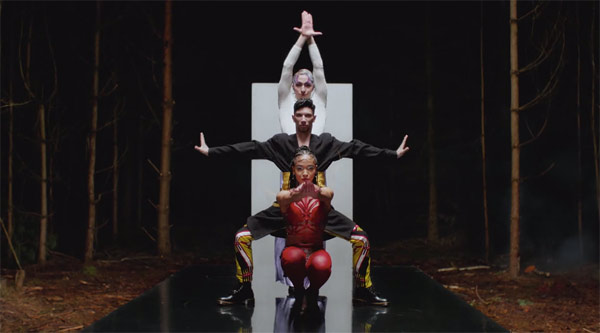Introduction
After captivationg the whole world with its unique language, powerful messages and constantly evolving, the ballroom scene keeps pushing the boundaries of a world that still doesn't recognize minorities and vulnerable groups, breaking barriers and closing gaps of inequality.
That's why in this section we'll explore the ongoing forms of expression of voguing as well as their cultual and social implications in present context, also, we'll explore the possible future implications of vogue in a constantly changing world.

Gender and identity inclusivity
Since its conception, voguing has seeked to challenge and redefine the conservative norms of gender and identity. As we move formward voguing has become a way of celebrating and including a broader spectrum of gender identities, making it a way for people to explore and redefine their own self through art.
Originally vogue was asociated with gay men and cisgender women, however, in the present days is important that we recognize that voguing is a movement constantly explored by the trans community and non-conforming gender individuals. That's why is crucial the generation of safe spaces and visibility for these groups, and as voguing continues to evolve, recognize the new expressions in the public space.
This way, voguing will continue to evolve it inclusivity, providing a diverse range of experiences, perspectives and mental structures, challenging the traditional gender binary norms, that doesn't include the realities of today gender structures.

Modern mainstream representation
It is important to mention that these new challenges on social structures are present and has influenced broader mainstream culture, achieving representation with several artists of different backgrounds. As vogue gains more visibility in media, it opens doors for further dialogue and understanding, contributing to a more accepting and inclusive society.
As vogue continues to be an art platform open to telling the stories of its performers, it gains the flexibility to have an ever-changing language of its own, open to the telling of every artist that participate in its dynamics.
The technological advances, makes possible for ballroom culture to have many available resources to thrive, making way for multisensorial experiences that contributes to the telling of LGBTQ+ history. Experimental artists like Arca or FKA twigs have included voguing elements in their art expressions, continuing to expand and to emphazize the importance of ballroom representation in modern media.
"LOOK at my face, LOOK at my face, LOOK at my face" - this is the effect vogueing has, according to FKA Twigs' recent interview with Complex. The movements of the famous ballroom art form say, "Look at how powerful I am, look at how beautiful I am, look at how confident I am," the singer and dancer explains, adding that voguer Jamel Prodigy and the other ballroom dancers she has been working with taught her, "to embrace parts of my femininity that I wasn't in touch with before".

The Voguing Protesters of Bogotá
For weeks, thousands of people have crowded the streets of Colombia, protesting inequality, rising poverty and police violence. President Iván Duque has deployed the country’s military and police forces, and more than 40 people have died.
On April 28, during a demonstration in Bogotá, three young dancers confronted their fear of violence there through the ultimate expression of life: dance.
Piisciis, or Akhil Canizales, 25; Nova, or Felipe Velandia, 25 — both of whom identify as nonbinary — and Axid, or Andrés Ramos, 20, who is trans, were recognized by other protesters in the crowd because of a viral video of them dancing that they posted to social media two weeks before.
“We decided to go out to protest for our human rights but also for there to be some visibility for the L.G.B.T.Q. and nonbinary community,” Piisciis said.
As they inched closer to the Capitolio Nacional or the national capitol in Plaza Bolívar, the main square in Bogotá, a woman suggested to Piisciis that the three of them walk up to the steps of the plaza and dance as they had in their viral video. There was one problem: the riot police officers swarmed at the top of the steps.
“We were very scared because everyone in Colombia is afraid of ESMAD,” Piisciis said in an interview, referring to the Escuadrón Móvil Antidisturbio, or Mobile Anti-Disturbances Squadron. “They are violent and aggressive with us.”
Wearing yellow caution tape that read “peligro,” meaning danger, loosely wrapped around their torsos as tube tops, and black pants, heels, a black ski mask for Nova and a long blond wig on Axid, they climbed up to the landing.
When Nova, Piisciis and Axid reached the top landing of the Capitolio, music started to play. It was “Por Colombia Hasta el Fin,” a guaracha song that Piisciis made for the protest. By the time the riot police noticed, they were already voguing.
As officers wearing riot gear began to surround the trio, they cunningly slipped by and walked closer to the crowd while making sensual hand movements. The crowd erupted in cheers.
The duckwalk, twirl, hand movements and dip all came from modern ball culture, a world away.

